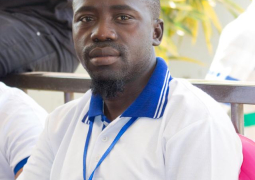As the coronavirus pandemic rages on, journalism around the world seems to face increasing difficulties. In my country, Denmark, local media outlets are suffering major economic set-backs and are already seeking state support. Such is the fragility of media operations that even in one of the most affluent countries in the world, with ample resources for public and private outlets, the disruption of social and economic life has immediate repercussions.
So, it comes as no surprise that independent media and local outlets in a majority of the world are running on life support amid this global crisis. No part of the world and no economic sector has gone unscathed.
Amid indefinite border closures, restricted entry and grave health risks, getting a full picture of this pandemic is no easy feat, even for media giants.
Meanwhile, community reports from local journalists with unique access, have become essential tools in fighting a growing information vacuum. It is indeed a paradox that, while hundreds of millions of people across the globe scramble for factual information to navigate the crisis, media outlets themselves are fighting for their existence. As we mark World Press Freedom Day, it is more urgent than ever that we support independent media platforms, especially those organically emerging within their local eco-systems.
As we, at Copenhagen-based International Media Support (IMS) transitioned into “crisis management” mode in this period, our media partners across the global south reacted with remarkable composure. While the western world is learning to hunker down in home offices, adaptability is in the very DNA of independent journalism.
The results of our partners’ work, from Syria to the Philippines, are clear. They are playing vital and at times life-saving roles in this pandemic period.
Amid persisting conflict, community radio stations like ARTA in northern Syria are relaying information about symptoms and prevention measures to local populations. Amid panic and paranoia in Pakistan, outlets like Humsub (All of Us) are producing a combination of citizen testimonies and expert insights. In the Philippines, there has been a proliferation of podcasts, like PUMA, that are dispelling coronavirus-related myths, with significant reach. Amid restricted media landscapes, all of these outlets are helping overlooked communities to combat the spread.
As a direct result, independent media across the world are also experiencing increased trust among their viewers. This is particularly true in countries where state media is failing to deliver timely information and where partisan media is creating biased coverage. For example, in Lebanon, Daraj Media, a pan-Arab platform that provides in-depth reporting, experienced a 46 percent audience growth in this period. In the Philippines, Rappler, a social news network, had 2.5 million viewers during a live Facebook session on COVID-19 awareness. In Iraq, al-Menasa, one of the few independent media in the country, experienced a 25 percent growth in audiences.
While the pandemic has instilled a renewed sense of purpose among media of all sizes, it has also wreaked havoc on the field of journalism. We are seeing a palpable increase in attacks on the press across the globe. The International Press Institute has been recording the intensified violations since the pandemic, from physical assaults in the US, to greater censorship in the Middle East, to arrests and false charges in several African and Asian countries.
For this very reason, “accountability journalism” has never been more important on a global scale. The accountability is twofold. First, journalists are investigating government responses to the pandemic, and holding officials and institutions accountable when they have failed to protect their citizens. Second, newsrooms are challenging authorities that manipulate COVID-19-related emergency legislation to curb freedoms.
The unique access and in-depth coverage of our media partners prove that a well-working prototype for community-based reporting that can plug into the larger global media picture already exists. It is a matter of strengthening the capacity and longevity of these outlets.
Poignantly, this pandemic has revealed that despite our seemingly connected world, a “one size fits all” remedy simply does not work. Whether it is in combating the disease, the economic and social consequences of the lockdowns, or relaying life-saving information, each country and its context warrant different approaches.
For example, South Korea’s approach of contact tracing and aggressive testing might suit some of the densely populated countries of the world, while a “shelter-in-place” mechanism is more feasible in Scandinavian countries. Only through transparent information sharing can countries learn from each other’s experiences while keeping in mind differences in their circumstances.
This is an opportune moment for governments, international foundations and citizens to financially support independent media across the globe as an investment in our collective futures. Amid shrinking newsrooms and restricted access due to contagion, there is great value in media of different sizes and capacities collaborating to present a more comprehensive view. I see this as a period of transformation. The current crisis has proven beyond doubt that we cannot turn a blind eye to an event in a faraway corner of the world, as it will eventually make its way to our door-step.
Now more than ever, we need contextual media coverage of this unfolding situation in order to return to some semblance of normal life. We must also be able to link the social, economic and environmental causes of this contagion to combat future instances. Our new normal must include a plurality of voices in news media across the globe.
Aljazeera
Read Other Articles In Opinion



